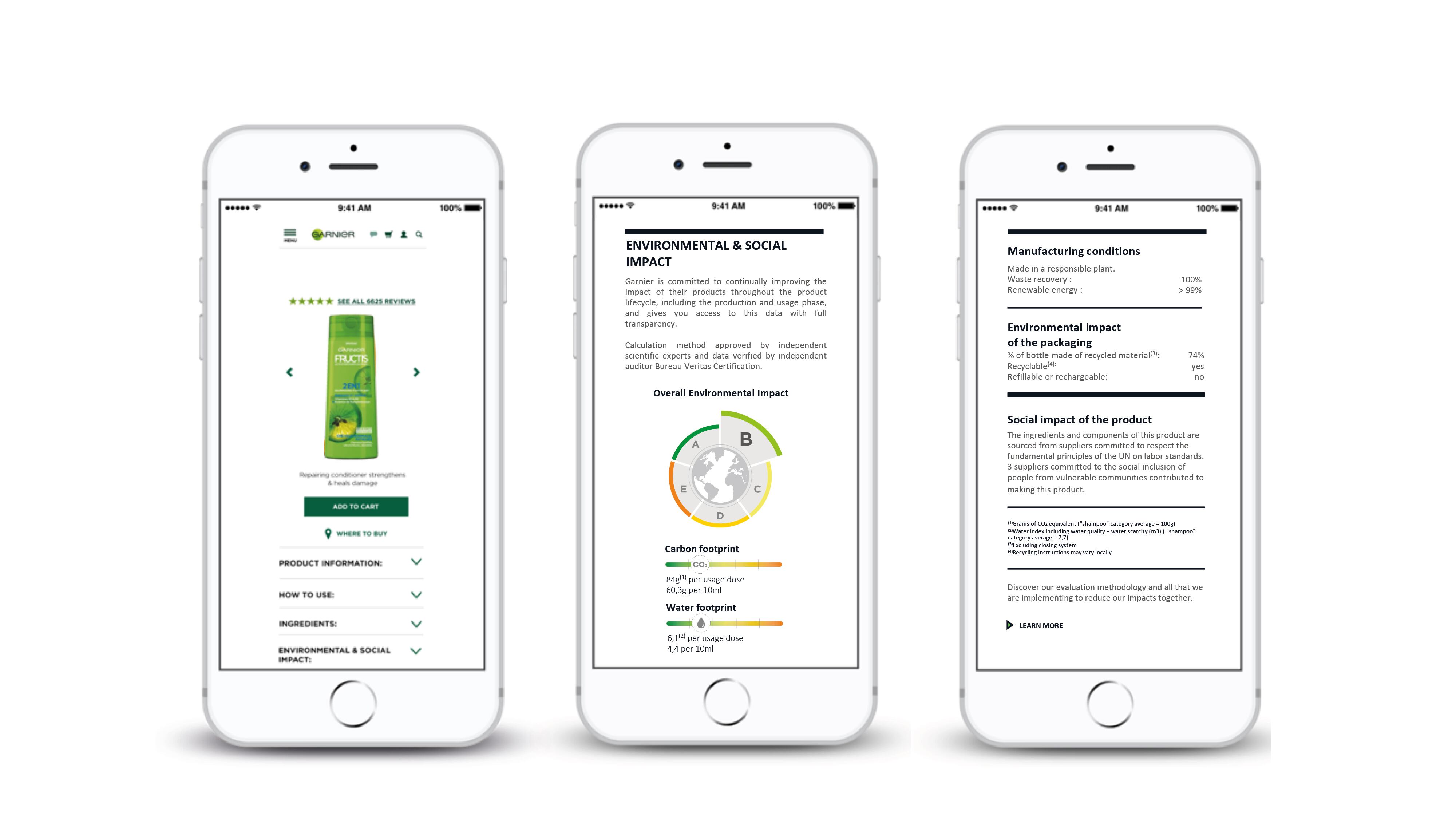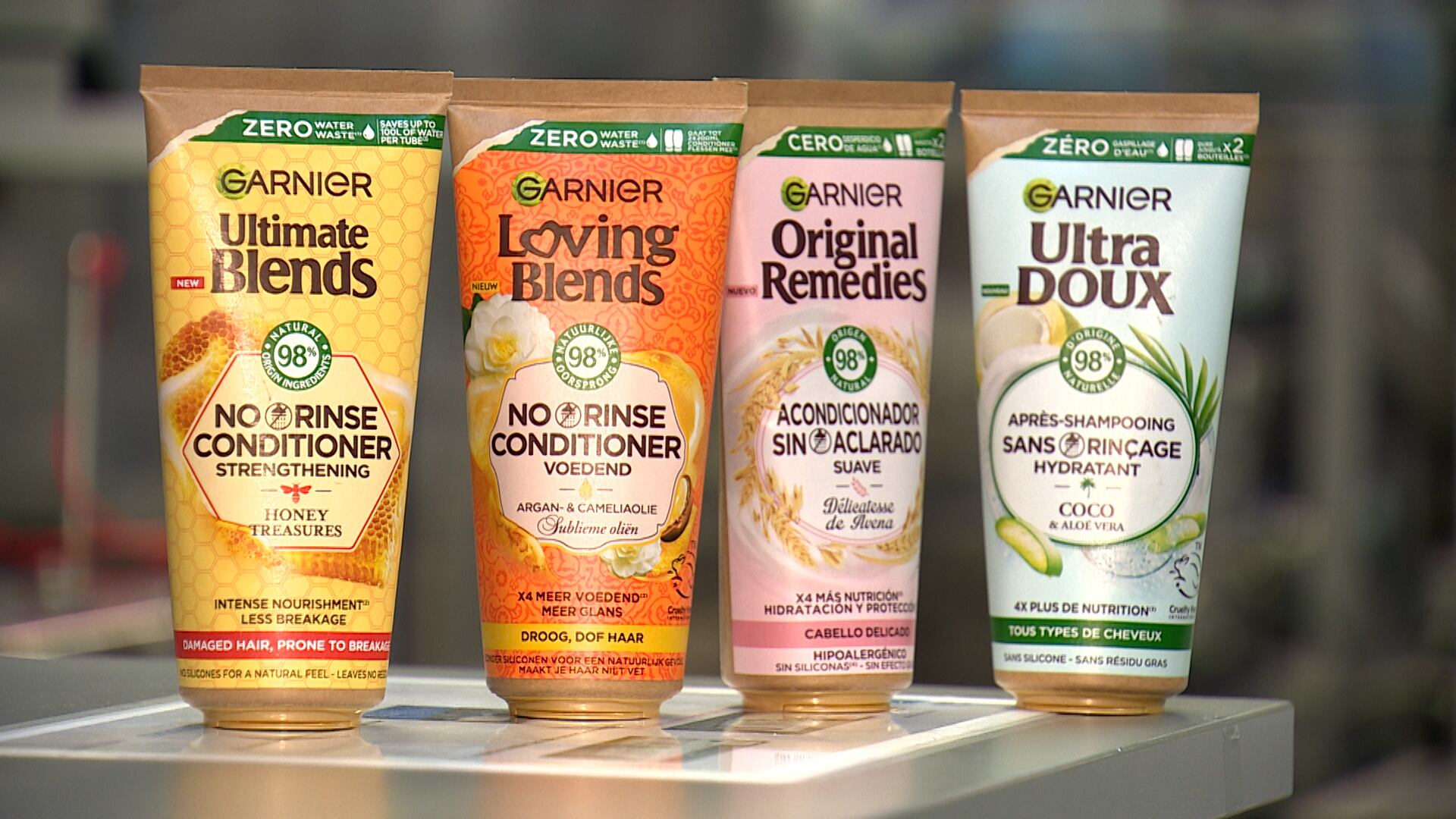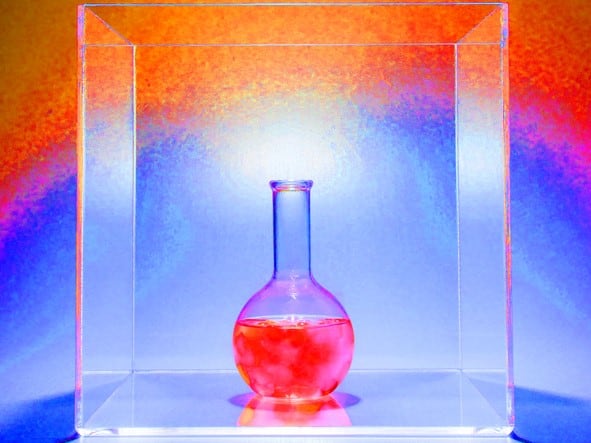L'Oréal's Garnier brand was leading the US implementation of L’Oréal’s online Product Impact labeling system, initially launched in France back in 2020. Other brands in the beauty manufacturer’s portfolio, including Kiehl’s, L’Oréal Paris, Redken and CeraVe, would follow suit.
What is L’Oréal’s Product Impact label?
Products graded A to E
The online labeling initiative awarded products a grade between ‘A’ and ‘E’ according to their environmental and social impact, with ‘A’ representing the ‘best in class’. The scores were obtained by considering 14 planetary impact factors, including greenhouse gas emissions, water scarcity, ocean acidification and impact on biodiversity, which were measured at every stage of a product’s life cycle. Consumers could access the sustainability scores online on the relevant product information webpage. Information regarding a product’s social impact, including compliance by ingredient or packaging material, labor standards and the number of suppliers committed to social inclusion, was also displayed where appropriate.
The methodology for the scheme was developed by 11 independent global experts between 2014 and 2016. In March this year, independent auditor Bureau Veritas certified the application of L’Oréal’s methodology and the accuracy of its data.
Sustainability in America
Discussing the US rollout, Marissa McGowan, L’Oréal’s chief corporate social responsibility & sustainability officer for North America, told CosmeticsDesign: “The Garnier hair care category is the first to feature our Product Impact label. Garnier has ranked more than 100 hair care products, of which 90% are ranked ‘B’ or better.”
L’Oréal said it was setting action plans to improve the environmental profile of lower ranked products. These would “leverage cutting-edge processes like biotechnology, green chemistry and extraction”.
“Most notably, we have a goal that 100% of all the Group’s products will be eco-designed, meaning our products will incorporate improvements in formulas, packaging and other aspects into their design that will help reduce their impact compared to previous generations of products,” said McGowan.
The online ranking system was designed as part of L’Oréal’s 10-year sustainability plan, which set out a framework for product improvements in a number of areas by 2030.
The company said it was rolling out the initiative in the US at a time when “sustainability is increasingly becoming a focus for more American consumers”.
L’Oréal backed up this observation with findings from a new survey conducted on its behalf by Morning Consult. The survey of 2,000 American adults found that more than half (54%) expected to find information about sustainability-related factors on company websites. It also said the survey showed that most Americans were concerned with at least one of the pre-determined environmental impacts, with human destruction of various environments the most recognized issue, cited by 50% of respondents. This was followed by water scarcity (43%), air pollution like dust and dirt (37%) and ozone depletion (35%).
However, intelligence provider GlobalData cited its own data to demonstrate how, at present, obtaining value for money was a more pressing priority for most US consumers.
Value for money the overriding concern
According to GlobalData’s Q3 2022 Global Consumer Survey, 62% of US consumers were always or often influenced by how well a product/service aligned with their time and money constraints. A far smaller number - 38% - were always or often influenced by ethical/environmentally friendly/socially responsible credentials.
“US consumers are most concerned with value for money at present due to the rising cost of living which will reduce the practicality of the labeling system as they prioritize price point over sustainability credentials,” said Lia Neophytou, senior consumer analyst at GlobalData.
Nevertheless, she said L’Oréal’s Product Impact labeling initiative would likely be well-received among those who want to easily understand a product’s planetary impact (which is often complex and difficult for the average consumer to determine) across multiple dimensions and with little research.
Limitations? Brand comparisons
However, Neophytou pointed at out that a limitation was that the initiative was only applicable to L’Oréal and its own brand and couldn’t be used as a tool for comparing the environmental impact of products from different manufacturers.
“While the system will help guide consumers towards the most environmentally friendly L’Oréal-branded product, it may be less useful for consumers who also purchase from non-L’Oréal brands and want to know how L’Oréal products compare,” she said.
L’Oréal was, however, a founding member of the recently launched EcoBeauty Consortium, alongside Henkel, LVMH, Natura &Co and Unilever, that aimed to establish a brand-agnostic and transparent global environmental measurement system. This tool, set for prototype launch next year, would enable beauty consumers to compare 'clear, transparent and comparable' information across different branded products.




